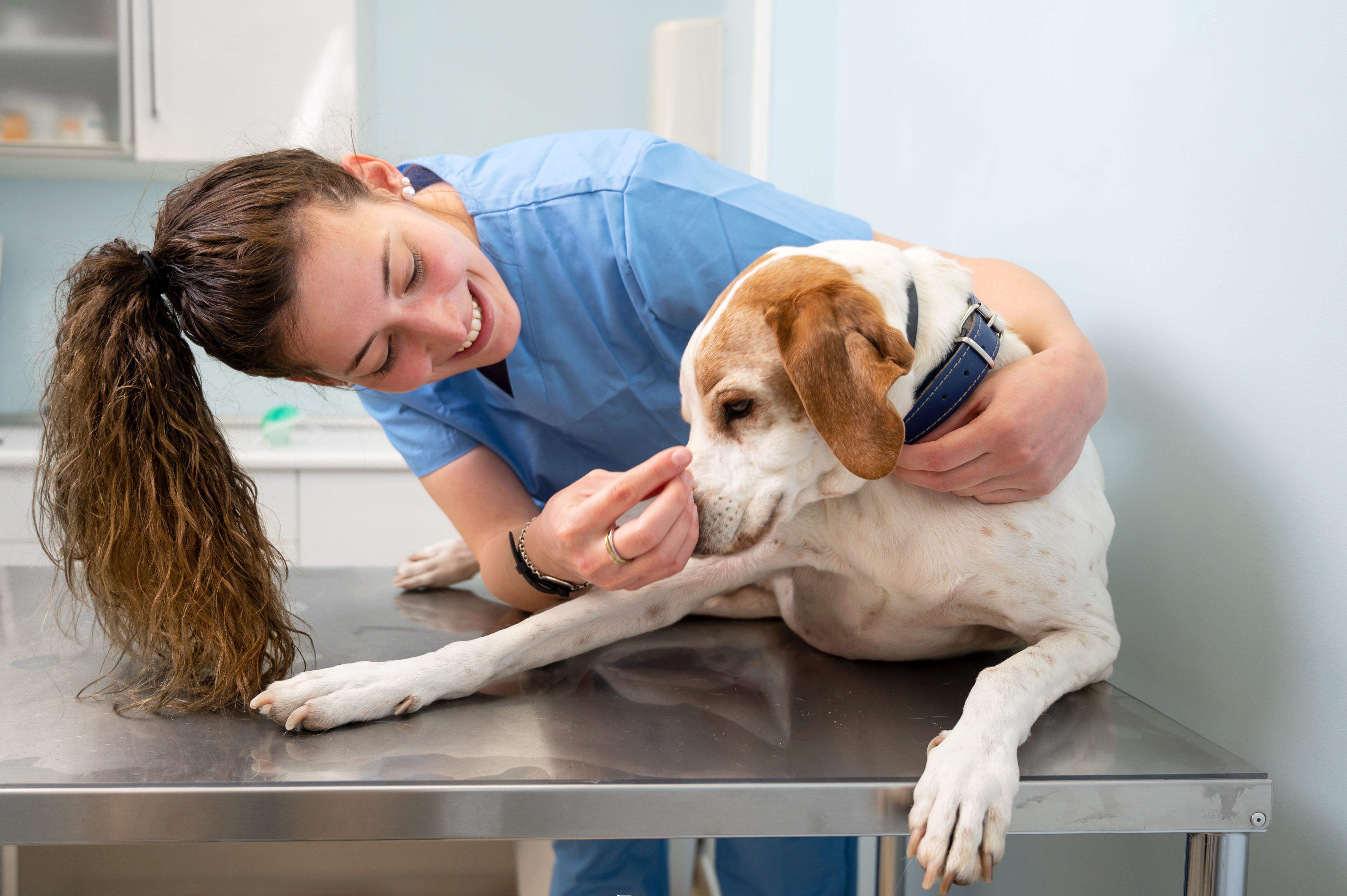Utilizing veterinary technician skills can benefit patients, clients and staff
A talk at the 2024 Veterinary Meeting & Expo discussed how these credentialed professions can help increase access to care for pets
Photo: herraez/Adobe Stock

The veterinary profession collectively wants to improve access to care for pets and seeking solutions. Better utilizing credentials technicians is one way that practices can expand their ability to provide service to more patients.1
How to increase responsibilities for credentialed technicians and improve utilization of these veterinary professionals was discussed during a session at the 2024 Veterinary Meeting & Expo in Orlando, Florida. According to presenter Kara M. Burns, MS, Med, LVT, VTS (Nutrition), VTS-H (Internal Medicine, Dentistry), president of the Pet Nutrition Alliance; founder and past president of the Academy of Veterinary Nutrition Technicians; and director of veterinary nursing development for WellHaven Pet Health, a 2010 survey of technicians found many believe they can be doing more in practice.1,2
“About 20% of respondents said they’re not feeling utilized. Our own technicians are saying that they’re not feeling utilized to their fullest potential. Another 20% said there’s nothing being done at their hospital to change that,” Burns said.1,2
Burns then asked the veterinarians in her audience their key challenges to better utilizing technicians. They cited “education” and “trust” as barriers to delegating certain tasks.1
Technicians also had their turn to address challenges to being better utilized in practice, and the audience called out some of their thoughts.1 “Veterinarians not knowing our true scope of practice,” said one attendee.
Burns noted that technicians want to be performing all the skills they’ve learned. “What happens if we’re not utilized properly?” she asked. Low wages, lack of respect, burnout and compassion fatigue, devaluing of credentials, underutilization, and lack of reciprocity were among the noted consequences.1
Clarifying the technician role has benefit. Utilizing these professionals starts with a clear understanding of tasks, responsibilities and processes at work. However, Burns said, clarity is not limited to an individual’s own role but also includes the roles of colleagues.1 “[Role clarity] really is a precursor of productivity. Lack of role clarity causes stress and confusion,” she added.
Veterinarians are needed to help clarify the technician role and improve the utilization of their skills. They key is to delegate, Burns noted.1 “It’s about scope of practice, standardizing credentials,” she said. “We’re not feeling challenged. We do as we’re told… But you’re not all here because it’s just a job.”
Tasks that can be delegated to technicians range from those that require low skills, like cleaning kennels and restraint, to mid-range skills such as blood draws, charting, fluid therapy and patient monitoring to highly skilled jobs including team management, patient assessments and protocolized plans, according to Burns.1 “What we’re trying to get to autonomy and improve trust [for technicians], empowerment and collaboration. We are a veterinary team,” she said.
In addition to increasing access to care for patients, developing stronger relationships with clients and improving morale on a veterinary team, good technician utilization can benefit a practice’s bottom line. Burns noted that one study found that credentialed technicians each bring $93,000 to $103,000 in revenue to a practice.3
According to Burns, there is also benefit to individuals whose technician skills are effectively utilized. One study found better utilized technicians were 3 times more likely to report an “excellent quality of life,” were 6 times more likely to be engaged at work and were 8% more productive across the board, she said.1
Burns also addressed the need to build mutual trust and respect between veterinarians and technicians.1 “Get to know your teammates,” she said. Veterinarians should find out what technicians know and what they may need to be educated on, while technicians should talk to their doctors, let them know what they can do and then demonstrate it, she added.
“We should all be appreciating and respecting [one another],” Burns said. “It’s that lack of appreciation and respect that can cause a team member to leave.”
References
- Burns KM. The veterinary technician’s role in expanded access to care. Presented at: Veterinary Meeting & Expo; Orlando, Florida. January 13-17, 2024.
- NAVTA 2022 demographic survey results: pay and education have increased; burnout and debt are still issues. National Association of Veterinary Technicians in America. January 16, 2023. Accessed February 15, 2024. https://navta.website/2022DemographicSurvey
- Fanning J, Shepherd AJ. Contribution of veterinary technicians to veterinary business revenue, 2007. April 15, 2010. Accessed February 15, 2024. J Am Vet Med Assoc. https://avmajournals.avma.org/view/journals/javma/236/8/javma.236.8.846.xml

Newsletter
From exam room tips to practice management insights, get trusted veterinary news delivered straight to your inbox—subscribe to dvm360.